'Let Her Cook', 'Ate' & 'Left No Crumbs': On Hunger and Slang
— what idioms reveal about food scarcity and a recession-proof focaccia recipe
Been thinking a lot about what it means to eat well when everything is broken. This is part essay, part kitchen therapy, and part cultural rant—Let’s cook.
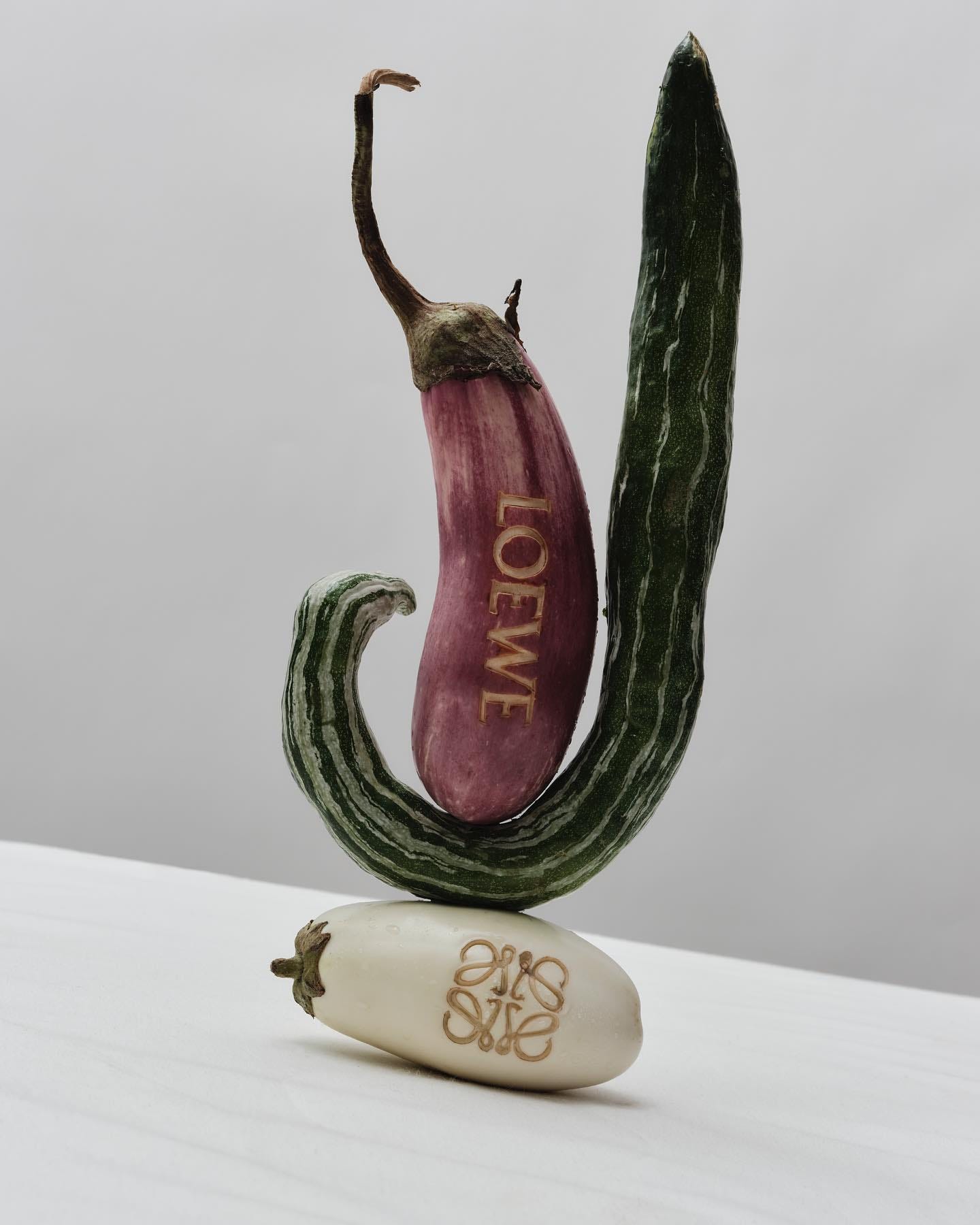
Food is not luxury. It is a human right.
So why is it so luxurious to eat eggs? To munch crisp greens or a piece of fruit? Don’t even get me started on the price of berries. Then Hollywood added insult to injury with $23 celebrity smoothies from Erewhon—who, by the way, recently shut down their Santa Monica tonic bar due to vermin.
If you still have an appetite, food remains our universal language—the great equalizer and canary in a coal mine. It's a signifier of hard times. Yet, eating well has become luxury. Food now holds a status, food has become performative, showing up in slang and pop culture. And as always, language reflects the survival and cool of marginalized people. To be fed is a flex.
“We have never suffered from scarcity, we suffer from greed.” — Rep. Pramila Jayapal
You can ship a perfect 50,000 yen (€350) strawberry from Japan to your doorstep if you got it like that. Pay a concierge service tens of thousands of dollars for a private dinner on an iceberg. Eating has become the ultimate luxury for elites and us alike. Why? Because people are starving.
Food Insecurity in the U.S.
Globally, 343 million humans are suffering from acute hunger and starvation. That number is rising at alarming rates.
Within the U.S.—one of the most stay eating, stay ordering delivery, wealthiest nations on Earth—47 million people, including 13 million children, are currently experiencing food insecurity. Food insecurity, simply put, means uncertainty around your next meal, a lack of nutrition in food, or not enough food to sustain an individual or a household. (food resource list below)
This, just as federal policy shifts under the current administration propose slashing billions from food banks and food assistance programs. $250 billion in cuts to SNAP. The elimination of USDA initiatives like Local Food for Schools. Entire community food access programs gutted overnight. And then there's the Ketamine-addicted Elon Musk, worth nearly $400 billion. According to the UN’s World Food Programme, if he donated just 2% of that wealth, he could end global hunger multiple times over. Musk challenged the UN to show a plan. They did. He did nothing.
Instead, his fake philanthropy now funds vanity space projects, unstable governmental crypto experiments that gut actual aid programs. Greed is now U.S. policy and the poorest babies on the planet are paying for it with their lives. (free community fridge, food security & food donation resources below article)
Global Hunger in Congo, Gaza and Beyond
Internationally, things are just as bleak. Funding for food and medical relief through USAID, who my sister used to work for as of last week, has been scaled back to skeletons. There is no food in Gaza. Over half a million people are suffering from starvation as the Israeli Army continues to block crossings for food and aid.
In the Democratic Republic of Congo, 28 million people are facing acute hunger, with nearly 4 million at emergency levels. The crisis is driven by conflict, economic instability, and skyrocketing food prices—especially in the eastern provinces.
And that’s just two regions. Food emergencies are ongoing in Afghanistan, Central Sahel, Ethiopia, Haiti, Lebanon, Mozambique, Myanmar, northeast Nigeria, Palestine, Somalia, South Sudan, Sudan, Syria, Ukraine and Yemen. Each one a dire emergency. All while we have more food, more billionaires, and more global resources than ever before.
“Poverty is the parent of revolution and crime.” — Aristotle
I’ve lived with low food security. It’s humbling and terrifying. It affects your body, your brain, and your sense of self and value. It makes you frugal in ways that don’t leave you. To this day, I ration. I reuse. I innovate at home but also in my business practices. Underconsumption and resourcefulness while looking good and eating good is part of my DNA—out of virtue and necessity. The way I move around nourishment, plant medicine, and food is informed by precarity, uncertainty. I’ve seen what scarcity does. I know it intimately. And that changes every part of you. It’s probably why I went into the weed industry right out of university; to earn quick money instead of struggle as a writer.
Food, Slang, and Money as Metaphor
Slang reflects economic collapse, cultural disruption, and the always clever resilience of working-class people and their communities. Think of “bread,” “cheddar,” “dough”, all meaning money. “Bread” became common in 1930s America; “dough” even earlier in Victorian England circa the 1850s. Our global language and figures of speech emerged from survival.
In our current era of digital expression we say “left no crumbs” or “let her cook.” Phrases coming from Black and queer vernacular. Just like “eating” and “ate” has become shorthand for performance and domination online—especially in drag and beauty economies. These phrases trace back to cultures where existing is a creative act. A protest. A random moment of praise that celebrates performance, power, maybe even peace? Leave her alone and “let her cook,” to give space, to let her shine. Some trace it back to Bay Area artist Lil B around 2010, just after the Great Recession. Later, GloRilla gave it new life, feminizing the phrase for a generation of women and femmes who know what it means to cook in every sense.
Bread.
None of this is new. “Let them eat cake”, misattributed to Marie Antoinette, became shorthand for elite detachment to need. The hunger has always been real and a fire starter. It was out of disgust of the French government and starvation that working-class women led bread riots in France in 1789. They swelled in the streets and bakeries protesting as the price of flour rose to 88% of a worker’s daily wages. This was food as protest. This was hunger that inexorably turned into revolution.
So what in the hell do we do now? Is cooking resistance? Is feeding each other enough? Honestly, I don’t even really know anymore. Maybe we start with focaccia—because it’s cheap, recession-proof, adaptable. It stretches. It nourishes. It requires no dairy. No meat, no animal. It’s honest and feels like a chance to start over.
The Recipe —
Recession-proof Focaccia
Yield: 10 Servings
Time: 45 minutes (active) 20 hours to rise
a working-class friendly, no-knead recipe for bubbly and pillowy bread that will hold you down when things are tough. Infused version, optional.
What You Need:
4 cups (500 g) flour, leveled
1 packet (7 g) instant yeast
2 cups (480 g) lukewarm water
6 tbsp extra-virgin olive oil
1 tablespoon weed infused olive oil *optional*
2 teaspoons flaky salt, more for topping
1 tablespoon rosemary, optional
What to do:
Step 1:
Pour the lukewarm water into a large bowl. Sprinkle the yeast on top. Let it sit for about 1 minute to bloom.
Step 2:
Add flour and salt into the bloomed yeast water. Stir gently with a wooden spoon or hands until a sticky, shaggy dough forms. It should be wet and loose.
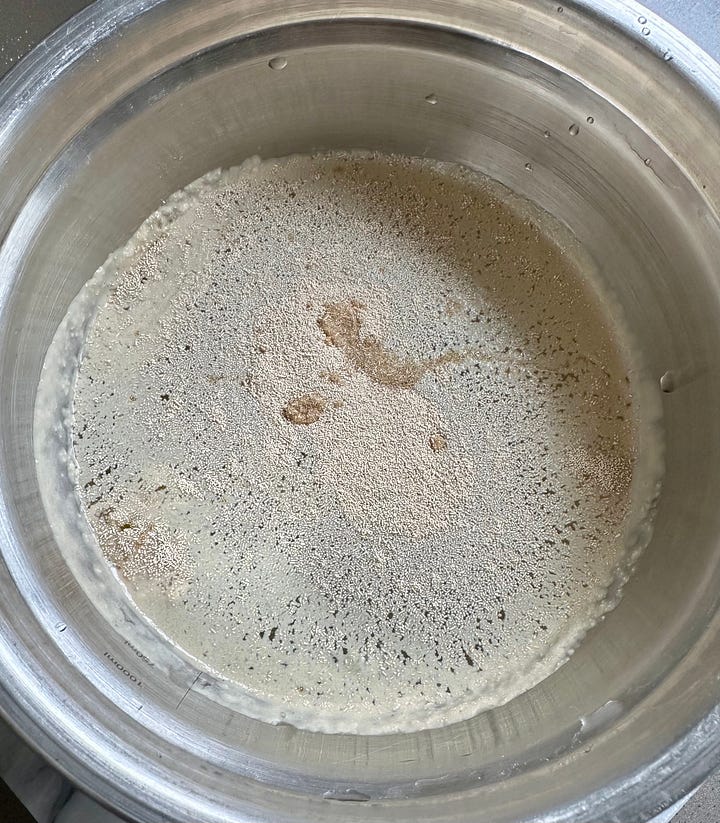

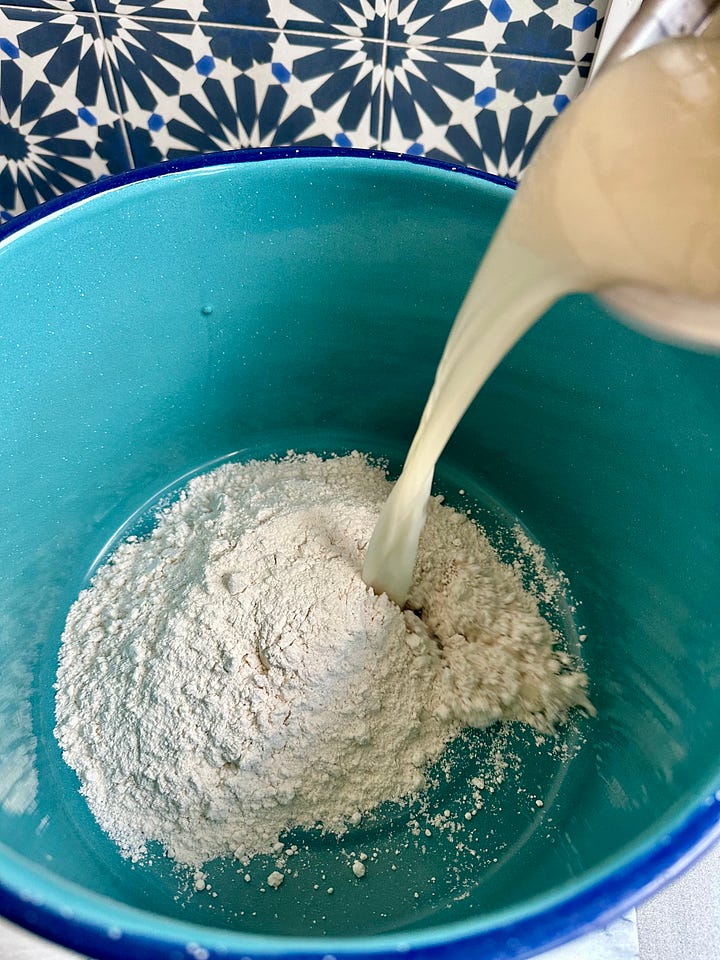
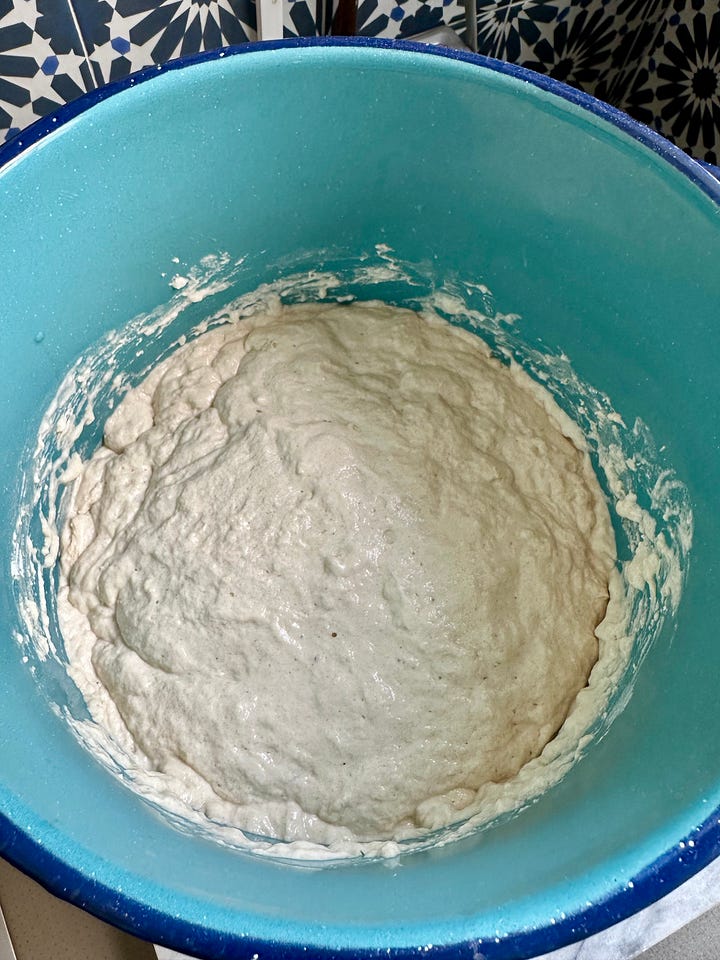
Step 3
Drizzle in 2 tbsp of the olive oil and gently fold it into the dough. Cover dough with plastic wrap, a clean tea towel, lid, whatever you have and let sit for 30 minutes. This will be the beginning of a four step folding and bread blooming process. For the next 2 hours, you’ll perform a set of folds every 30 minutes: with olive-oiled hands, grab four edged (folding one at a time) starting with one edge of the dough, stretch it up, and fold it over itself.
Rotate the bowl and repeat 3–4 times per session. After the final set of folds, you can either leave the dough at room temp to rise for another 2–4 hours until bubbly and doubled — or cover the bowl and refrigerate it overnight for deeper flavor, bigger bubbles and more flexibility in timing to bake if you have things to do. Trust me, it’s all worth it.
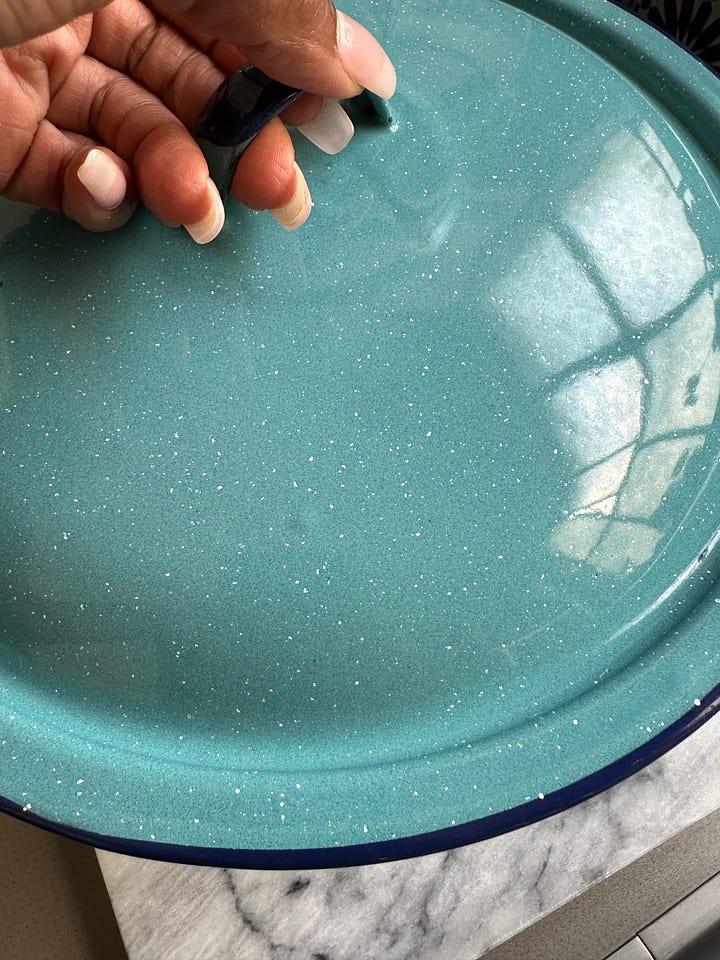
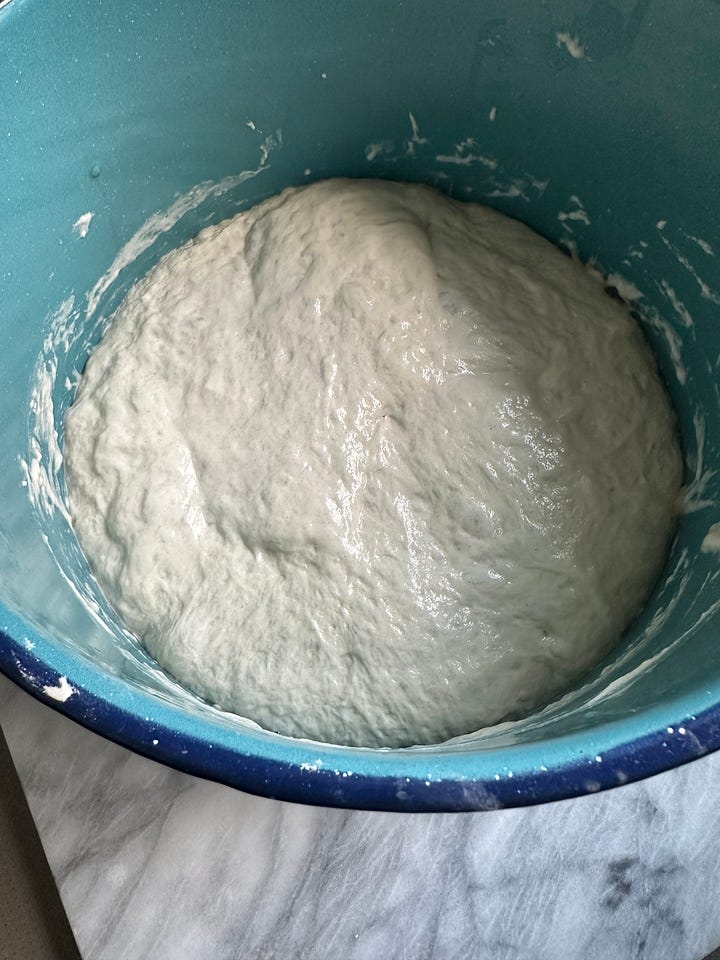
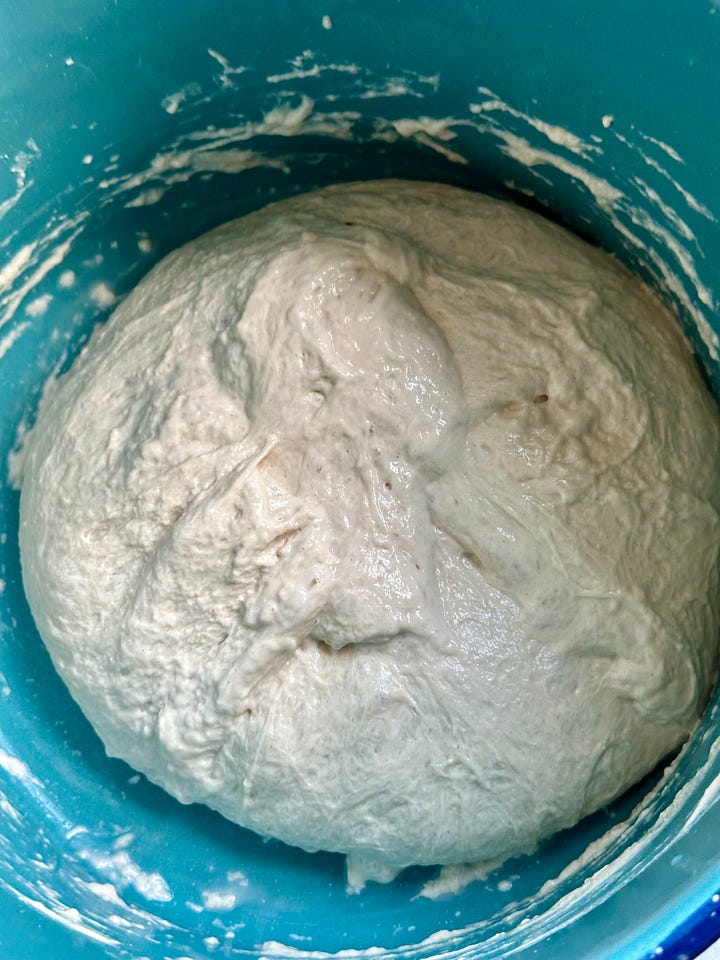
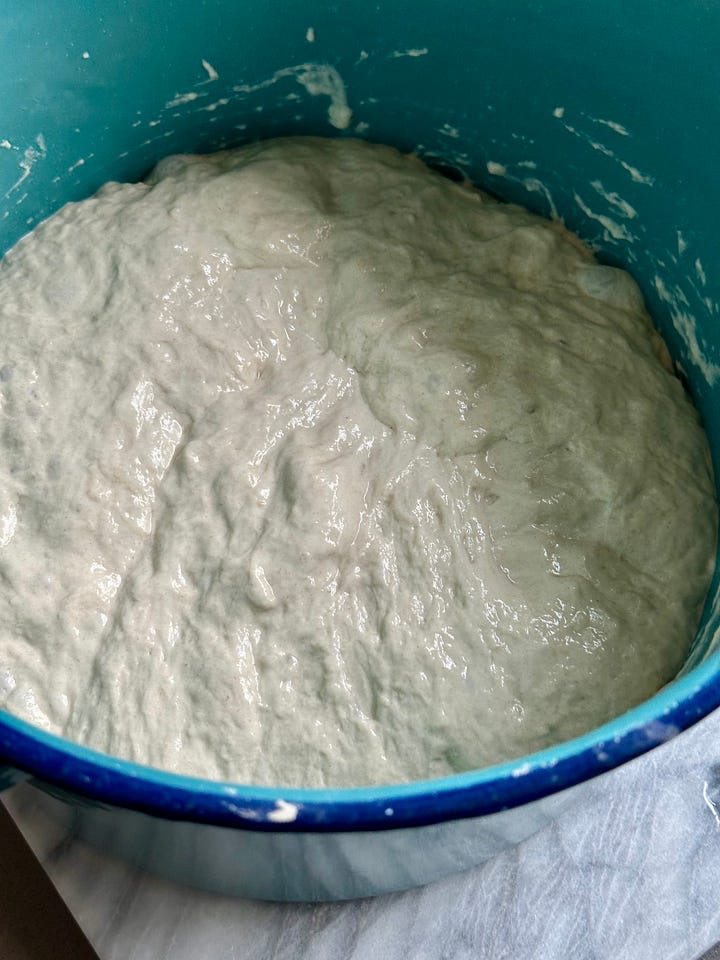
Step 4
Oil a 9x13-inch pan (or whatever oven-safe dish you have) with 2 more tbsp olive oil. Scrape the dough into the pan and—lol, you guessed—let it sit covered for another 30 minutes. Then gently stretch it to fit the entire pan. Let it rest again, uncovered, for 2 to 3 hours until very puffy.
Step 5
Preheat your oven to 450°F (230°C). While it heats, pour the remaining olive oil (and infused oil if using) over the dough. Dimple the surface with oiled fingers — press deep, down to the pan and wiggle. Then top with flaky salt and rosemary if you’re using it and push down one last time.
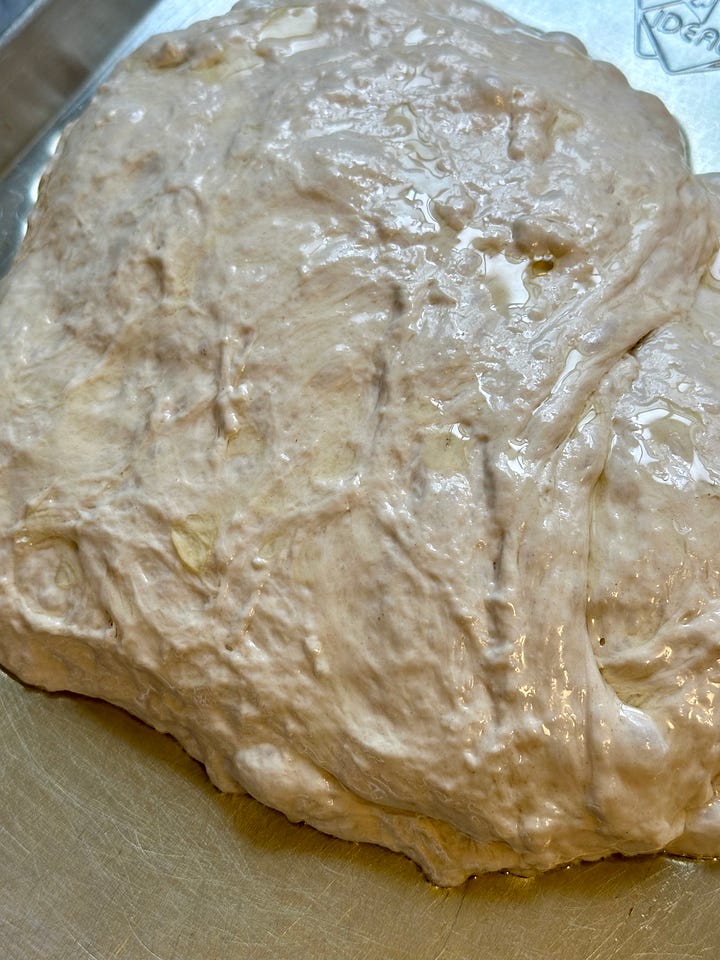
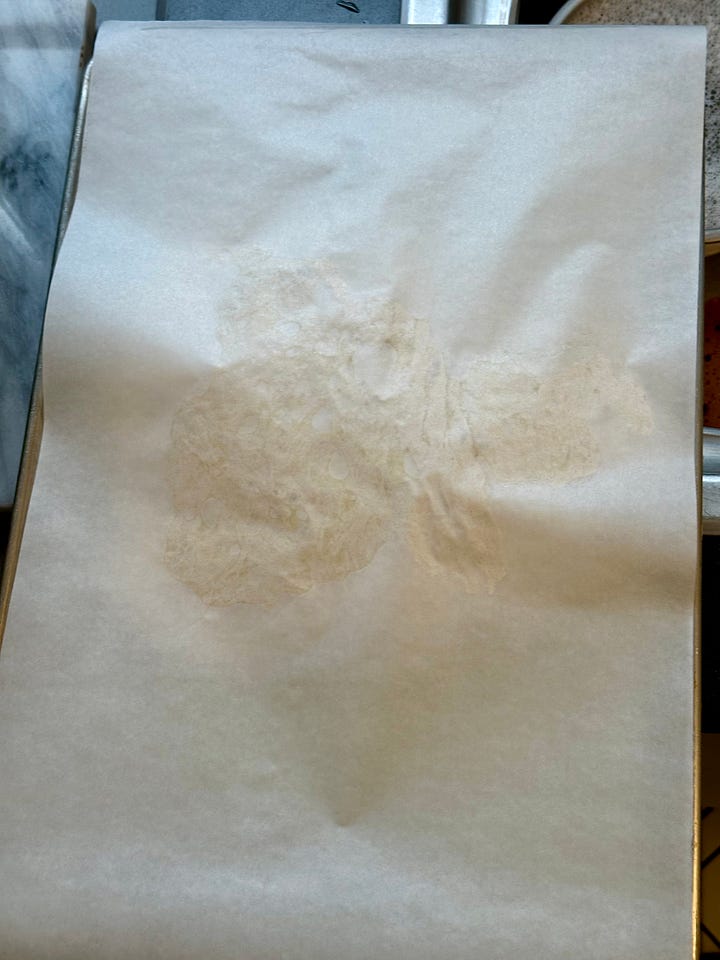
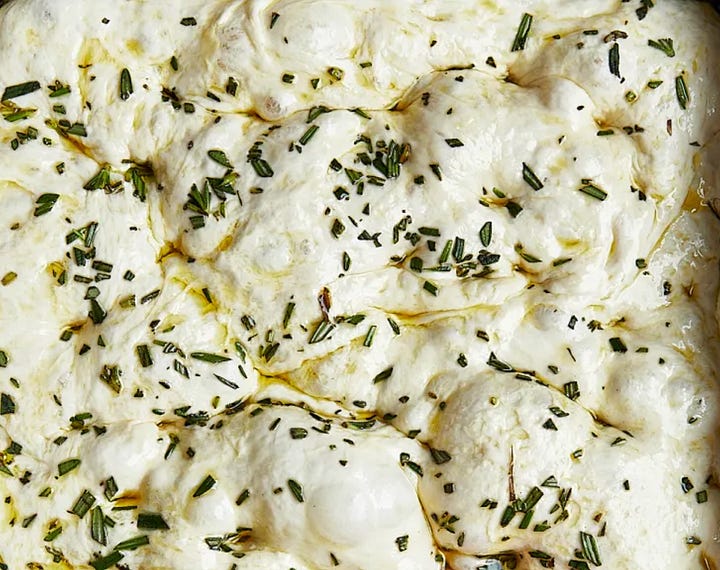
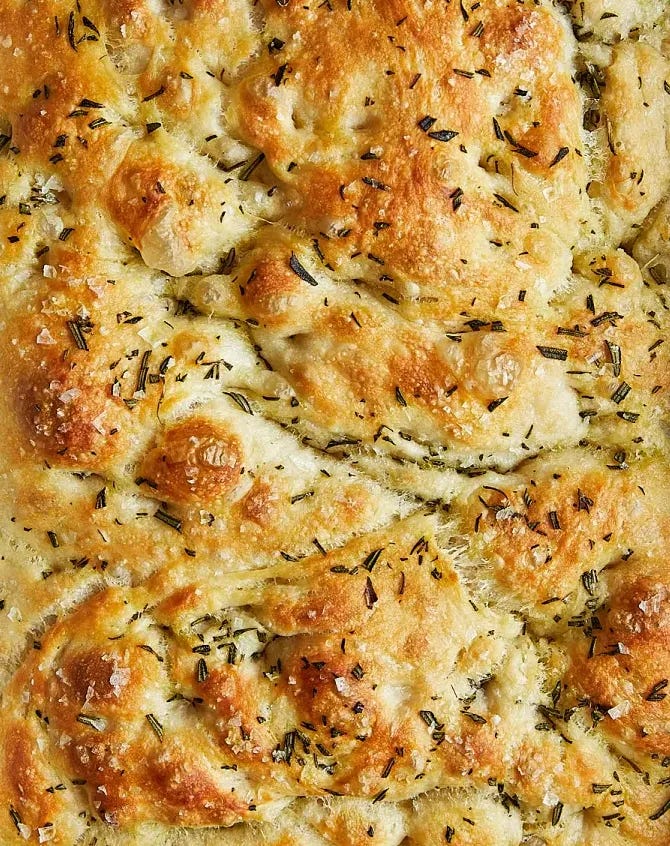
Step 6
Bake for 20–25 minutes until golden brown and crisp on the edges. Let it cool for at least 10 minutes, then slice and serve immediately.
To Serve
I usually just rip pieces off and snack during the day but to keep it classy you can use the bread as an elevated base for any type of sandwich. Store in a bread container, glass food containers, the freezer, or a clean reused plastic bag. (Keeps up to 3 days)
Pro-tips:
Don’t have rosemary, use dried oregano, lavender, thyme, or even thinly sliced garlic.
No flaky salt? Use whatever salt you have and sprinkle sparingly on top.
Want to stretch the bread even further? Add thinly-sliced red onions, or leftover veggies on tip before baking.
Recipe inspired and adapted from Ebony West and The Nostalgic Crumb
Food & Donation Resources:
Portland Free Fridge: Map of Locations
South Philadelphia Community Fridge: Donate / Shop for produce
The Peoples Fridge: NYC Free Fridge Map
Fort Greene Free Fridge: Volunteer & Mutual Aid Donation
Harlem Community Fridge: Donation Links
Oakland, CA Town Fridge: Donations
Las Vegas Free Fridge:
USA Food Resources Federal (for as long as these exist)
Feeding America: https://www.feedingamerica.org/take-action/advocate/federal-hunger-relief-programs
Federal Child Nutrition Programs: https://www.nutrition.gov/child-nutrition-programs
Federal Food Distribution Programs: https://www.nutrition.gov/topics/food-security-and-access/food-assistance-programs/food-distribution-programs
Federal Nutrition Programs for Seniors: https://www.nutrition.gov/topics/food-security-and-access/food-assistance-programs/nutrition-programs-seniors
Federal SNAP Program: https://www.nutrition.gov/topics/food-security-and-access/food-assistance-programs/supplemental-nutrition-assistance-program
Federal WIC Program: https://www.nutrition.gov/topics/food-security-and-access/food-assistance-programs/wic-women-infants-and-children
Federal Meals for Kids Program: https://www.fns.usda.gov/meals4kids
National Lasagna Love Program: https://lasagnalove.org/request-a-meal/
Federal Emergency Food Assistance Program: https://www.fns.usda.gov/tefap/emergency-food-assistance-program
Islamic Relief Fund: https://islamic-relief.org/
World Food Program Emergencies List: (each country on the list is alphabetically ordered though all are in emergency need of food and nutritional support. Click on each respectfully to donate directly)
*If there are other resources you think I should add to this list, please let me know in the comments or send me a message, here.





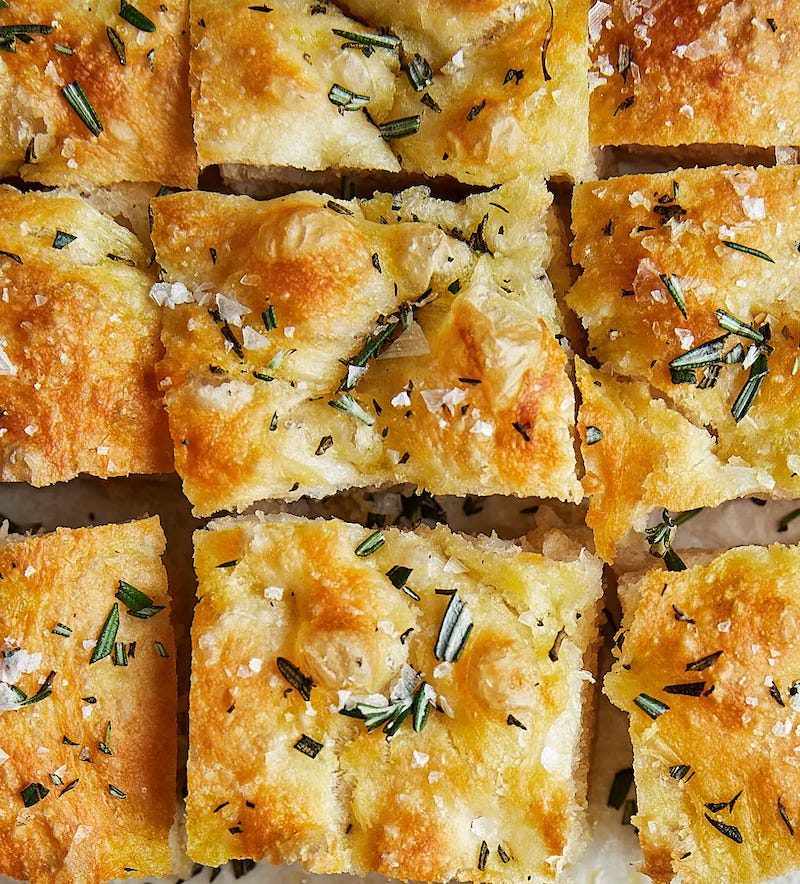
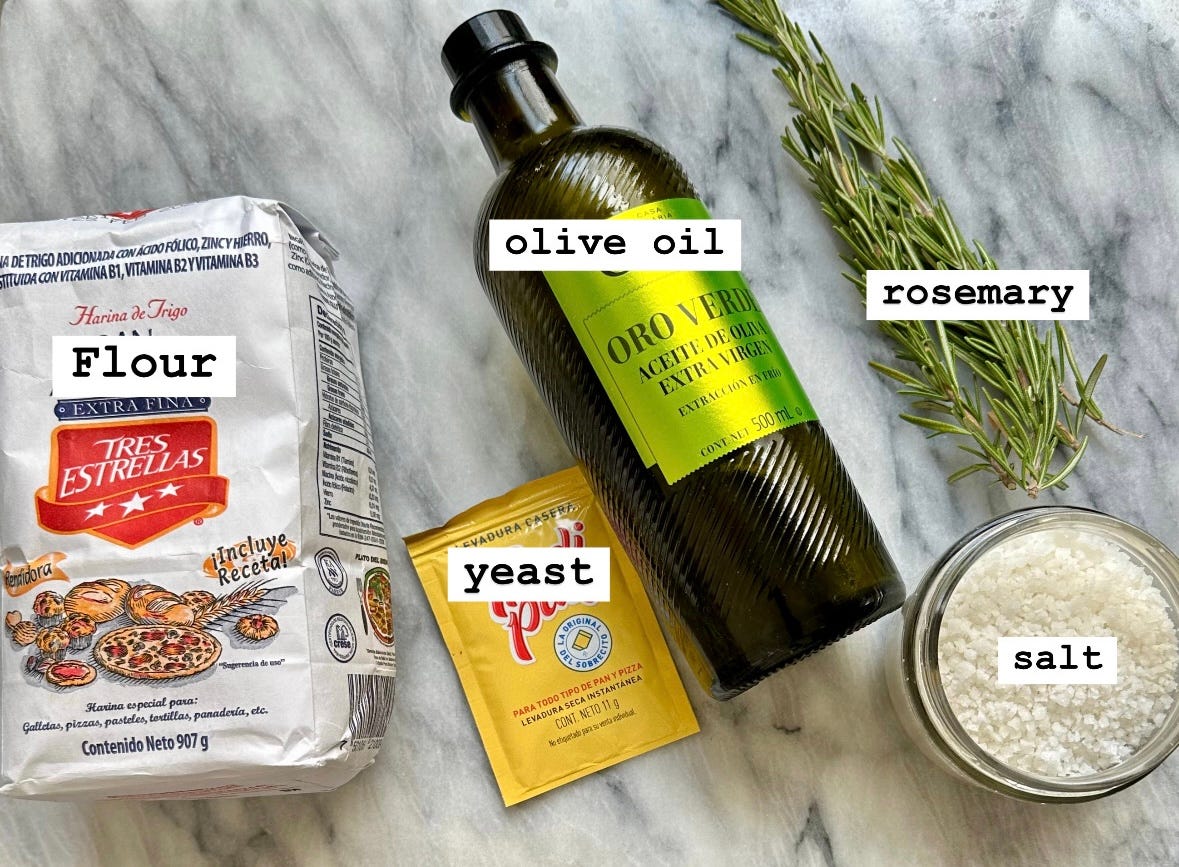
I made some herbal infused honey for the full moon and my rage. I was thinking of using it and my San Francisco sourdough starter a friend gave me to make a sweet focaccia. This recipe is right on time!
The continual disconnection from our roots (at every level of the figurative), plays out in a continuing loss of knowledge+practice about food and how to cook (develop) it. The deference to (corporatized) conveniences kinda takes away the value of slowkey...